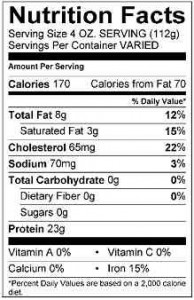As with all industries, nothing stays the same for long and the food industry is no exception to this rule. So what’s happening in 2015 to change the way that the food industry operates?
Let’s explore the biggest introductions to the industry and the impact that they are likely to have:

Going Digital
In the age of smartphones and instant connectivity, it isn’t surprising that one of the biggest changes will be the introduction of more digitalisation across the industry. A company already looking to launch increased digitalisation is McDonald’s, who will be bringing touchscreen kiosks and smartphone technology to many of their restaurants around the world.
This new innovation would allow customers to load up their past history, pay using NFC and gain recommendations based on their previous purchases. In a way, this is a system that will be bringing the personalisation we regularly experience from eCommerce websites to physical stores, allowing customers to shop with a much more personal experience.
McDonald’s isn’t the only company to be taking an increasingly digital approach, US bakery chain, Panera, have also adopted this new era with open arms. They’ve taken a slightly different approach to McDonald’s in that they’ve created an app that allows you to place an order with your local chain so that it’s there waiting for you when you arrive at the store.
More Information on Packaging
Over the last year or so there has been a huge drive in manufacturers providing nutritional information on all their packaging. EU laws have been a huge driving force behind this move, but society as a whole has also become more aware of their consumption, in general.

Image: USDAgov
People want to know everything there is to know about the products they are using, resulting in increased amounts of information being demanded from manufacturers. Many companies have started to include easy-to-understand charts and figures to clearly present RDA, making it much simpler for people to maintain a healthy balanced diet.
In addition to this, we’ve seen information such as source location being included.
More Awareness of Carbon Footprint
Almost every industry has been tasked with reducing carbon footprint, with many restrictions, rules and regulations being put in place to prevent needless waste. There are several ways that the food industry has changed in order to reduce their emissions and waste, including:
- Sourcing local products
- Using biodegradable packaging
- Manufacturing to match demand
- Greater efficiency during production processes
- Increased use of renewable energy

Expect to see the food industry taking more steps to combat its carbon emissions over the next couple of years. We’ve already seen a huge increase in the amount of sustainable materials and biodegradable packaging being used by international food companies, with the likelihood being that it will roll out across the entire industry.
Looking to keep up with the latest changes in the Food Industry? At Charlotte Packaging we offer a wide range of packaging solutions that can work to reduce your carbon footprint, be customised to provide detailed information and even be designed to fit your new digital approach. Want to find out more? Get in touch with expert food packaging suppliers and see how together we can find the best solution for you.
